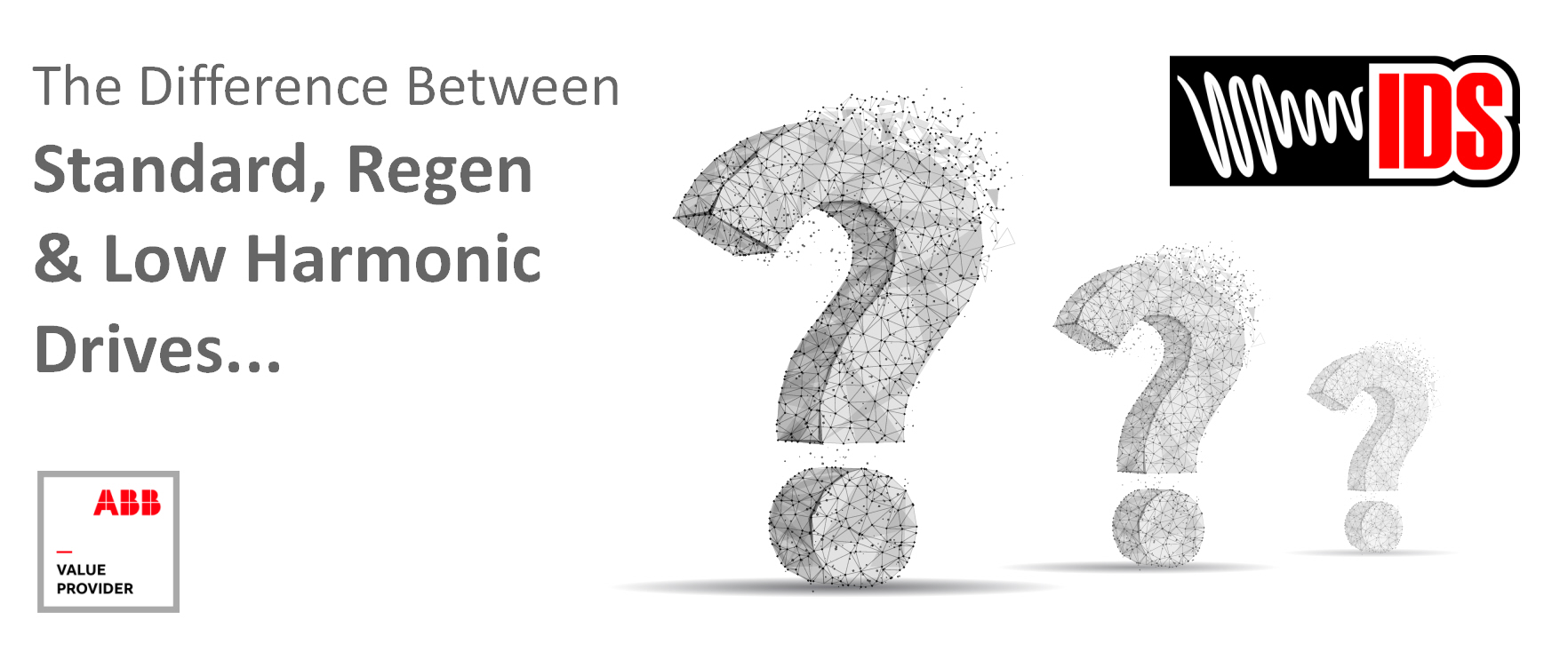The Difference between Standard Regen and Low Harmonic Drives
There can be some confusion about inverter types – standard / 6-pulse, low harmonic, or regen drives. In this article, we explain the differences with their pros and cons.
6-Pulse Drives
These are the most common type of inverter and they have a diode rectifier on the input.
Advantages:
- Relatively cost effective
- Compact
- Efficient (around 98%)
- Readily available
Disadvantages:
- Generates harmonics on the mains, especially those without a dc or ac choke
- Wastes energy when braking (via a brake resistor)
Low Harmonic Drives
These fall into two categories – those utilising a passive filter and those with active front end. ABB refer to their active front end inverters as Ultra Low Harmonic Drives to be clear about the technology employed.
Passive Filter Advantages:
- Relatively cost effective
- Simple
Passive Filter Disadvantages
- Tuned for a specific load
- Can get overloaded if load or supply changes
- Non-dynamic
- Bulky
Active Front End Advantages:
- Transistor input bridge effectively does not create harmonics
- Compact
- Easy to install and use
Active Front End Disadvantages:
- More expensive
- Reduced inverter efficiency to around 95%. However, since there are effectively no harmonics generated, this efficiency loss is compensated within the power system by reducing the losses in the transformer, cables and motor when compared to a 6-pulse inverter
Regenerative (Regen) Drives
These drives share the same hardware as the low harmonic drives with active front end. In this case the input transistors are programmed to allow power to flow both ways i.e. into the motor and when under deceleration, from the motor back into the mains. This is particularly useful on cyclic loads such as hoists.
Advantages:
- They can allow energy that would be wasted to regenerate back to the mains; this saves money
- Excellent braking characteristics
Disadvantages:
- High capital outlay
- Reduced efficiency (the same argument applies as per low harmonic drives with active front end)
Each inverter type is suited for different environments, applications and solutions. For assistance deciding which inverter will work best for you call our experienced inverter engineers on 0115 944 1036 or email [email protected]

